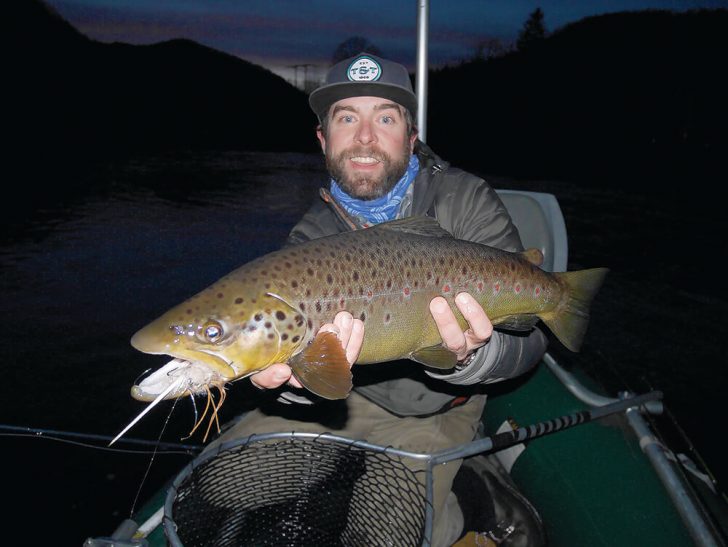Everyone knows summer is a great time to catch trout on a fly. But for those looking to take fly fishing for trout to a whole new level, consider mousing. Mousing refers to fishing for trout with large topwater patterns meant to mimic small rodents. It is a tactic best utilized at night when nocturnal rodents forage.
The basic premise is that large trout have adapted their diet to eat mostly meat, be it smaller fish, rodents, frogs or even small birds. These fish are the top of the food chain in the waters where they reside, and they can be extremely hard to catch. They mostly hunt at night and use the cover of darkness to stay safe from predators. Fishing at night has its challenges, and it has its rewards.
Here are a few things to keep in mind when mousing.
- Be quiet. Sometimes it is hard to remember that fish can hear, too. Vibration from even our footsteps can spook these giants. So stealth is the name of the game; walk carefully and quietly and maybe the splash of your fly on the water will be followed by the eruption of water that is an eat from a big nocturnal fish. Keep light to a minimum and use a red/green light so the fish will not be spooked and your eyes will not be shocked by the light.
- Be aware. When fishing at night, it is critical to know the stream you are fishing. It can be dangerous to be on the banks of a river in the dark, so always move slowly, not only will this help your stealth factor but it will keep you safer. As your senses adjust to the darkness, you can tune in with your surroundings, and you might be amazed at the things you hear and even see with just the light of the moon.
- Be ready. Big fish eat big food. This applies to fishing streamers during the day or fishing mice in the dark. Have a good selection of large flies that swim on or just below the surface. When mousing, you can also use large subsurface streamers that push a lot of water. Fish can’t see very well in the dark, so they rely on sound and vibration when hunting at night. Large wind-resistant flies are hard to cast when you can see what is going on, much more so when you can’t see your hand in front of your face. Use clear-lensed glasses to protect your eyes.
- Be calm. It is easy to get excited and pull the fly out of the fish’s mouth when setting the hook, so wait a couple of seconds after you hear the splash. Give the fly a small twitch and wait until you feel the fish, then set the hook and get ready for the night of your life!
